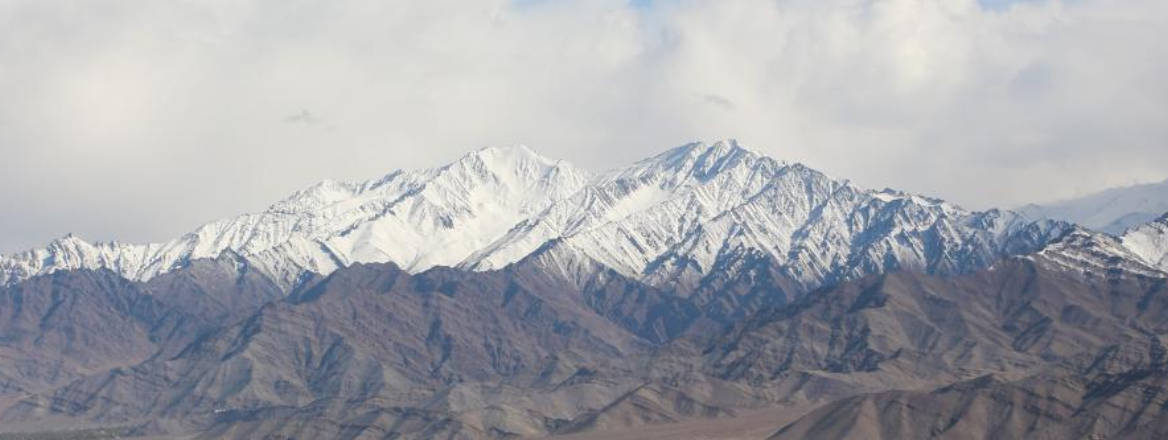India–China Clashes: Escalation Along the Line of Actual Control
The first bloody clash between China and India in decades could lead to a profound realignment between the two giants.
A few possible reasons have been put forward to explain the timing of China’s actions against India across the Line of Actual Control (LAC), the disputed boundary between the two states. A prominent theory is that China objects to the Indian construction of border roads close to the LAC – especially the 255-km Darbuk-Shyouk-Daulat Beg Oldie (DSDBO) road, which is aimed at narrowing the existing infrastructure gap with China along the LAC and provides India with all-weather access to its airfield near the Karakoram Pass.
While the road itself has been under construction for several years, India has recently started building feeder roads and bridges from DSDBO to forward areas along the LAC. India’s decision to convert Ladakh from a state into a centrally governed union territory when it abolished Jammu and Kashmir’s special status and bifurcated the territory in August 2019 has also been noted as a factor, with the implication that – given that the suspicion between the two sides is mutual – China remained unconvinced that the step was driven by purely domestic political imperatives and was not intended to reassert India’s claim on Aksai Chin, territory that is claimed by India as part of Ladakh and has been under Chinese administration since the Sino-Indian War in 1962.
Notably, the confrontation occurs in the wider geopolitical context of India’s growing closeness to Chinese rivals such as the US, Japan and Australia, which is seen as a tool to balance against China’s rise. Some Indian observers have also drawn attention to the fact that China’s aggression along the LAC coincides with a broader pattern of assertiveness also reflected in its activities in Hong Kong, Taiwan and the South China Sea.
While China’s intentions and objectives for taking action along the LAC at this particular time remain opaque, what is clear is that the current crisis differs from other standoffs in the recent past in that it involves troop build-up at multiple areas along the LAC, including some that New Delhi considered settled.
FIRST CASE OF DEADLY VIOLENCE IN 45 YEARS
The latest clashes – which resulted in the killing of at least 20 Indian soldiers, including one commanding officer, and an unconfirmed number of Chinese casualties – are likely to be a watershed moment in bilateral relations. This skirmish is particularly significant as it represents the first time that fatalities were registered in a showdown between the two neighbours since 1975, even though border patrols regularly encounter each other in disputed areas.
While there has been no official account of how exactly the deaths occurred, a statement by the Indian Army noted that no firearms were used and that 17 soldiers who were critically injured during the clash died after being ‘exposed to sub-zero temperatures in the high altitude terrain’. Media reports from India indicate that the violence began when some Chinese troops did not move back from their positions as part of the agreed de-escalation process and were confronted by Indian troops. Tensions escalated rapidly and led to fighting involving iron rods, sticks and stones, during which soldiers fell or were thrown into the river, with some succumbing to hypothermia.
According to Indian media reports, many troops remain in the Galwan Valley area, and the fact that this incident occurred even after sustained talks between military commanders at various levels – and during the first phase of the planned disengagement – indicates that the process is unlikely to be frictionless. Indeed, India has continued to transport labourers to Ladakh to continue working on border roads. Reports also state that PLA troops have moved into the Depsang area, north of the current flashpoint and the site of a previous standoff in 2013 (which may also have been sparked by Chinese discomfort with the DSDBO), suggesting that this crisis may not be resolved in the near future.
From an Indian perspective, what will create further concern is a statement from the PLA Western Theater Command – reinforced by the Chinese Foreign Ministry – claiming Chinese sovereignty over the Galwan Valley region, one of the areas along the LAC that India regarded as being settled.
WHAT DOES THIS MEAN?
In India, the current crisis may dent Prime Minister Narendra Modi’s image as a nationalist strongman, cultivated when responding to militant attacks linked to Pakistan, both via rhetoric and military action. This image was further bolstered among his supporters during the 2017 standoff between India and China in Doklam, when Indian troops intercepted Chinese road construction in territory claimed by Bhutan near the India–China–Bhutan trijunction. During the current crisis, however, Modi remained largely silent. Statements from the Indian defence minister prior to the clash sought to underplay the severity of the crisis and emphasise disengagement. The deaths of the Indian soldiers will thus result in significant domestic pressure on the government, with political opposition questioning the government’s handling of the crisis and public opinion likely to call for retaliation.
As has been noted by analysts such as Ananth Krishnan, while quiet diplomacy is perhaps necessary to move towards a resolution, the Indian government’s near silence on the confrontation at the LAC has created an information vacuum. According to former National Security Adviser and Foreign Secretary Shivshankar Menon, the silence could indicate to China that ‘everything is negotiable’. This is especially problematic if the status quo along parts of the LAC has been altered, as appears to be the case along Pangong Lake, where Chinese troops have occupied territory between the two sides’ perceptions of the LAC that was previously patrolled by both Indian and Chinese troops and is now inaccessible to the Indian side. Unlike in the other areas of the standoff, there has been no progress towards disengagement at Pangong Lake.
It remains to be seen whether, like in the case of Pakistan, the relationship with China becomes a focus of domestic political discourse. As the attempts at quiet diplomacy have not paid off, this could constrain the Modi government’s options, as retaliation would come with the risk of greater escalation, while exercising restraint might chip away at his strongman image. For China, according to Yun Sun, a scholar at the Stimson Center in the US, ‘South Asia is not China’s primary theater’ and it is not in China’s interest to engage in a large-scale conflict with India. Indeed, the lack of reporting on this issue in the Chinese official press seems to indicate that Beijing is refraining from using the clash to drum up nationalist sentiment. Nevertheless, given the lack of mutual trust in the relationship, the repeated confrontations along the LAC in recent years appear to have signalled to observers in India that China’s activities in the region are an example of ‘salami slicing’.
The current crisis is likely to impact the trajectory of broader India–China relations, which was hinted at by the Indian External Affairs Minister Subrahmanyam Jaishankar during his phone conversation with Chinese Foreign Minister Wang Yi. While India has frequently emphasised its policy of strategic autonomy, noting that its alignment with other countries is dependent on its interests with regard to specific issues, it is increasingly becoming the case that on key strategic questions such as maritime security in the Indian Ocean region, competition in South Asia and the emergence of new technologies, its interests appear to lie away from China.
Even in areas where the discussion has been more nuanced, such as in India’s decision to allow Huawei to participate in 5G trials, there could be a shift as a result of the current crisis. In terms of the economic relationship, the trade imbalance in favour of China has always riled Indian policymakers, though analysts have pointed to the difficulties of attempting to boycott Chinese products, as has been called for by certain trade groups. In addition, while the large amount of Chinese investment in India, particularly in key sectors such as telecom, will likely prevent any straightforward decoupling that strategic decision-makers may advocate, the Indian government recently implemented policy that creates an added layer of scrutiny on incoming Chinese investment.
Moreover, the public perception of China in India has deteriorated sharply as a result of the coronavirus outbreak and is likely to become even more negative following the current crisis. This is in addition to other structural constraints on India–China relations, including the deepening China–Pakistan relationship, India’s hosting of the Dalai Lama and the border dispute itself.
In the wake of the ongoing confrontation, the economic and military power asymmetry between India and China is likely to accelerate India’s quest to deepen partnerships with countries able to support its growth and strategic balancing of China. This could manifest as a closer relationship with the US, though there is an underlying concern in New Delhi about its long-term reliability. It is also likely to result in a more proactive diversification of partners and greater cooperation with middle powers in the region, such as Australia and Japan.
Unlike after the 2017 standoff, when Prime Minister Modi and President Xi Jinping met for informal summits designed to calm tensions and temporarily shift the narrative on bilateral ties, it will be difficult to mend relations and manage optics following this incident. Unless there is a more tangible shift on the border dispute, the argument often put forward by policymakers in both New Delhi and Beijing that India and China will not let ‘differences turn into disputes’ will ring hollow.
The views expressed in this Commentary are the author's, and do not represent those of RUSI or any other institution.
WRITTEN BY
Aaditya Dave
Former Research Analyst, South Asia


